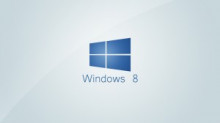Microsoft has done a great job by squeezing the Windows installation process from the 60 screens in previous versions to just 11 clicks in new Windows 8 operating system. Somehow Microsoft understood that a simplified Windows 8 installation is going to be the key factor urging users to upgrade to Windows 8, as it is designed to work on all PCs running Windows 7 as well as many that run Vista and XP. Microsoft admitted that it mainly focused on the install works for Windows 7 operating system to improve the rate of successful installations, but now it wants the process to be solid, faster and easier to use.
IT admins and other advanced users shall be able to run advanced installations still, but Microsoft has however streamlined the basic setup system making it in as low as just 11 clicks from a convoluted 60 screens. Inside the older OS, The “streamlined setup” kicks off by running the DVD or web download, loading the preload the 25-digit product key automatically. It will scan the PC for compatible programs that can be moved to the new OS, and makes a note of which version and language of the operating system to install.
Users who are upgrading to Windows 8 from Windows Vista won’t be able to bring their apps with them, but can keep the settings and personal data. Those who are upgrading from Windows XP can’t bring apps and settings to new Windows 8 operating system. Many applications are found to work almost immediately with the new Windows 8 OS. St Pierre said the team has managed to run 21-year-old Excel 3.0 on Windows 8 – those that don’t work will be addressable inside the setup system, meaning that users don’t need to halt the process and restart it from the beginning.
Windows 8 transfer
The File transfer system is much improved for upgrades in Windows 8. Rather than moving each individual file, it moves entire folders,“drastically reducing the number of file operations required”, the company said. Windows 8 transfers are also made easier by linking to files in the old system rather than rewriting them through a “transport” holding folder to the new Windows 8 operating system.
